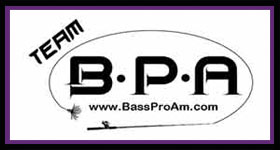Cranky Can Be Good
Gettin’ Cranky Can Be a Good Thing
(By: Jerry Carlson)
Crankbaits. You either love them or hate them. They can be a blessing that solves a fishing dilemma or they can be a thorn of fishing frustration. The “cranky” feeling can come from success as well as failure.
Knowing when to apply the crankbait strategy and when to avoid it is usually the factor that determines which emotion is applied to the term cranky. Under the wrong situation, crankbaits are a waste of time. Under the correct conditions, they can create some of the most memorable fishing you will ever experience.
First of all, crankbaits are not a finesse tool. They are not a rig that will work for vertically jigging or ultra slow trolling. They rarely work for precision fishing situations when you need to dangle live bait in front of finicky fish. However, crankbaits do have multiple talents that need to be considered on a regular basis.
In order to fully utilize crankbaits, it is necessary to understand the appeal of this lure to fish. Fish relate to their surroundings with the same senses that we have. They rely heavily on their sense of sight and feel. Because of water clarity, sight is often limited. However, the lateral line keeps a fish in tune with anything moving around them.
Although the vibration of a crankbait may not exactly duplicate the movement of baitfish, it doesn’t seem to matter. Predator fish sense the presence of the bait and will come from great distances to find out what it is that is triggering their lateral line curiosity.
Crankbaits don’t all come with the same wobble and that is a critical factor to consider. Long slender baits tend to have a looser wiggle pattern than short fat ones.
On the other hand, bass and northern like baits that have a tight wobble and send out a more aggressive vibration signal. This hard wobble gets even more attention from predator fish once the water warms and fish are more active.
Once their lateral line helps them locate the prey, sight becomes the major influence. Because sight is such a huge factor in fish reaction, color also comes into play.
When you ask anglers about color preferences, expect to get a wide variety of responses. There are no hard and fast rules for color, but there may be some guidelines to follow.
It is hard to ignore the fact that walleye see green and chartreuse better than other colors and northern see red and orange well. Some anglers swear by the orange belly pattern found on some baits. They feel this is more important than the main color of the body.
If you are going to stock your crankbait box, I find blue and silver, firetiger, and shad colors hard to beat. If you talk with pros that fish a variety of colors on a consistent basis, they will also tell you that neutral colors work well.
Sound is another factor to consider, especially when fishing stained or dirty water. Because sound travels three times faster in water and is magnified seven times, fish hear the tiniest of tinks very well. Sound helps get the attention of predator fish.
When utilizing sound or rattle chambers, I like to use hard wobble baits that are going to make the most of the added rattles. Rattle Traps, Frenzies, and the new Salmo Zipper are good choices.
Although there are endless situations where crankbaits will produce, I often use them as a search tool. By casting or trolling cranks, it is easy to cover a great deal of water in a very short time. This is especially important when working scattered fish.
By changing the size of the lip, anglers can target fish at different depths. This depth may be anything from one foot to more than 20 feet. By utilizing strong but thin lines, like FireLine, lures can be made to run deeper than normal. With super lines, it is also easier to monitor how the lure is running.
Although lip size can control the depth, a weighted crankbait may perform better. According to Kelley Cirks, National Sales Director for Salmo Lures, there are times when too much lip will cause the lure to stand vertical when going through the water. He believes a weight added to a smaller lipped lure will improve the presentation.
And don’t be afraid of the weeds. Ripping crankbaits through weeds can often trigger fish. Even though there may be a little salad hanging on the hook, fish will hit the bait.
The art of fishing crankbaits is a book worth of material. There are more tips and strategies than could ever fit into one story. What does fit is the concept that crankbaits do catch fish in a variety of situations. The key is to spend enough time using them that a person develops faith in their fish catching ability. Once this happens, crankbaits will become a “go to” presentation instead of a “last resort.”
When it comes right down to it, gettin’ “cranky” can be a really good thing.



